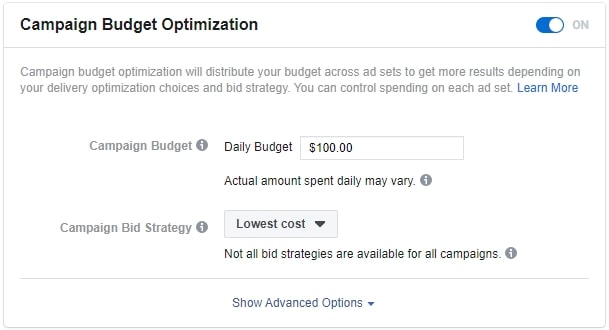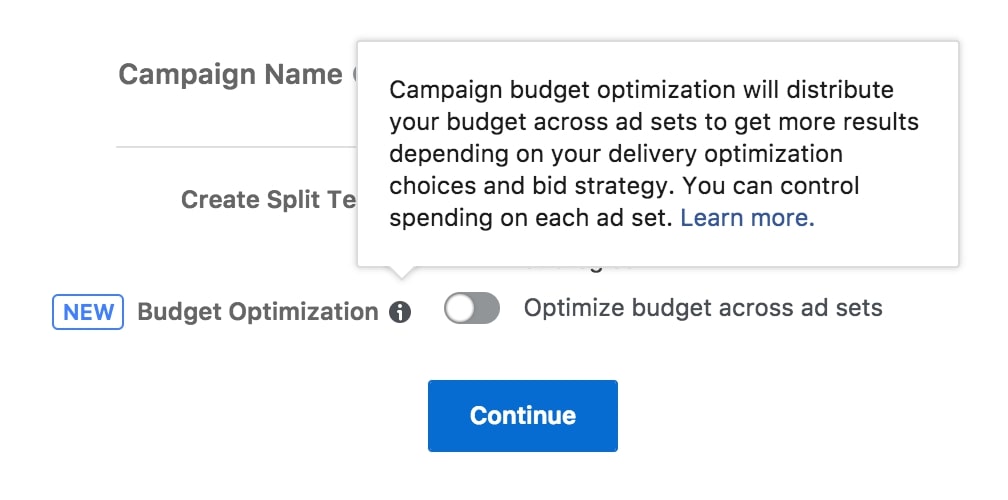Woah! It’s okay! We’ve got the answers (most answers anyways)! After reading this article, you’ll understand everything in the directory below. Feel free to skip to any section.
Directory:
-
- What’s the Main Difference Between CBO & ABO?
- What Is Campaign Budget Optimization
- What is Ad Budget Optimization?
- What Is the Difference Between Managing My Budget using CBO vs ABO?
- How to Set Your Budget to CBO
- How to Set Your Budget to ABO
- Our Proposed Startegy: How to Test with ABO, Then Scale with CBO
We know this is a critical concern many people have and continue to ask us about, so you can always send this article to anyone in need!
If you’d rather follow our video, ABO vs CBO (which budget optimization to use) Facebook Ads 2021, we’ve linked it below!
What’s the Main Difference Between CBO and ABO?
What is Campaign Budget Optimization?
When and Why Did Facebook Start Using CBO?
In light of this, Facebook has given its advertisers a more simple way to manage their advertising budget and made the transition into setting CBO as the default budget distribution setting with the intention to produce better results for the advertiser. how it works and when to use it.
In February 2020, it became the default setting, meaning any new campaigns you create would have been automatically set to CBO, but you could easily change them to ABO.
How Does Facebook Use CBO?
How does Facebook measure ad performance? Simple! Well… as simple as AI is. You heard that right! Artificial intelligence is more present than we thought. Facebook uses AI to collect data on conversions by monitoring different:
- Audiences
- Creatives
- Ad copies and titles
- Trends
- Geographic locations
- Interests
- Keywords
And more! This data has been collected from Facebook ads throughout the years to create a knowledge base for the algorithm, which it can use to estimate ad success.
Despite this knowledge, it still needs some data from your own ads, since every ad is different. That’s why it will invest more money in better performing ads.
With ABO, on the other hand, it is up to you to decide how much money goes into each ad set.
What is Ad Budget Optimization?
What is the Difference Between Managing My Budget Using CBO vs ABO?
CBO uses artificial intelligence to invest in the best audiences AND ads, while ABO uses AI to choose which audience to invest in.
When you are using a CBO model, you are managing your budget on a campaign level, meaning you decide how much money goes into each campaign. Facebook will then take care of managing funds between ad sets, and ads.
With an ABO model, you would still need to think about how much you want to spend on the overall campaign, but the budget is ultimately set at the ad set level.
A CBO budget adjusts dynamically over your audiences and ads (changes overtime) whereas an ABO budget stays static (does not change) unless you manually adjust it.
CBO will machine pick how much budget will go into which audience. However you are still targeting your audiences the same way in CBO & ABO. But if you have 3 audiences within a campaign, CBO will decide that A and B will get more than C.
Pros and Cons of Turning CBO On:
- Lower cost per conversion when used properly!
- Facebook is able to prevent overlap of our audiences between ad sets since the budget is centralized to one campaign.
- You can avoid wearing the audience down because the budget adjusts dynamically between warm audiences and cold audiences
- Less manual work.
Cons
- Less control over your budget.
When Do I Turn On CBO?
- When you have more data from the pixel for the AI to work with:
- When you have a smaller budget: Facebook will optimize what little budget you have if you aren’t supplying enough to fund two campaigns.
- When you have less experience with Facebook ads: you can rely on AI until you get a better understanding of the system.
- When you are scaling: If you increase the budget, Facebook already knows which ad sets are performing well and will spend wisely, so you won’t have to change each individual ad set budget.
When Do I Use an ABO Campaign?
- When you have a new ad account with very little data on the pixel: if the algorithm doesn’t have much to work with, it might not know what to do. If you’re starting off with a fresh ad account, try collecting enough data to guide the AI once you start using CBO.
- When you are testing new creatives, audiences or copy: it’s good to keep test budgets the same, so that you know exactly how much better other ads are doing with the same amount of funds.
- When your audiences are very different in size: Facebook will generally favor a larger audience size, without necessarily knowing what kind of audience you are looking for. If you are hosting a location-specific, niche event that has a very small but very warm audience, you might know who would be best to reach instead of Facebook. CBO will try to get the most reach, so if you really want to reach a smaller audience, you can control how many funds go into them vs your larger target groups.
How to Set Your Budget to CBO:

OR
Click on the Campaigns section and edit your budget in the Budget column.

- Enter in your campaign budget.

Our Proposed Strategy: How to Test with ABO, then Scale with CBO
- Different topics (angles) in each campaign
- different creatives in each ad set
- different texts and titles in each ad
For these testing campaigns, we recommend you start by using ABO, since it’s good for testing. This will also let Facebook collect data on the ads performances so that it can know where to invest.
Try making sure you keep a smaller budget for this strategy, since you are only running tests.
To up your ad game, try out some of our creatives in our article on 5 Facebook ad Creatives That Convert.
- After getting enough data from Facebook, try to figure out which campaign is getting the best CPA (cost per action).
- Create a “golden campaign” with the best performing ads and be sure to target a large audience. We suggest keeping the targeting as broad as possible. Turn on CBO.
- If your golden campaign is working well, try scaling up by increasing the budget by 5%-10% every 48 hours
DO: make sure you are doing this with a larger audience to avoid oversaturation. Investing too much money in a small audience may spam them, scare them away or worse: get your ad flagged!
DON’T: overspend! Make sure the reach you are getting does not surpass your capacity to serve new customers. If you invest in too many ads, you may get too many customers at once! Yes, it is possible to have too much of a good thing, especially if you are a service based business, or you have a limited inventory.
Summary
As with any intelligence, AI has room to grow out of infancy. And who knows? We may find ourselves in a world where we have robot best friends and drone flown pizza delivery. Why not leave marketing up to the computer!
We advise you to take it slow and use both setups to experiment which drives better results. Make sure YOUR marketing strategy works for YOUR business.
If you’re not quite sure how to get there, don’t be afraid to book a free strategy session with us, where we can help you come up with a plan!
As always, feel free to leave any comments or questions on this page, so that I can leave no stone unturned!

Sydney Switser
Facebook ad specialist





